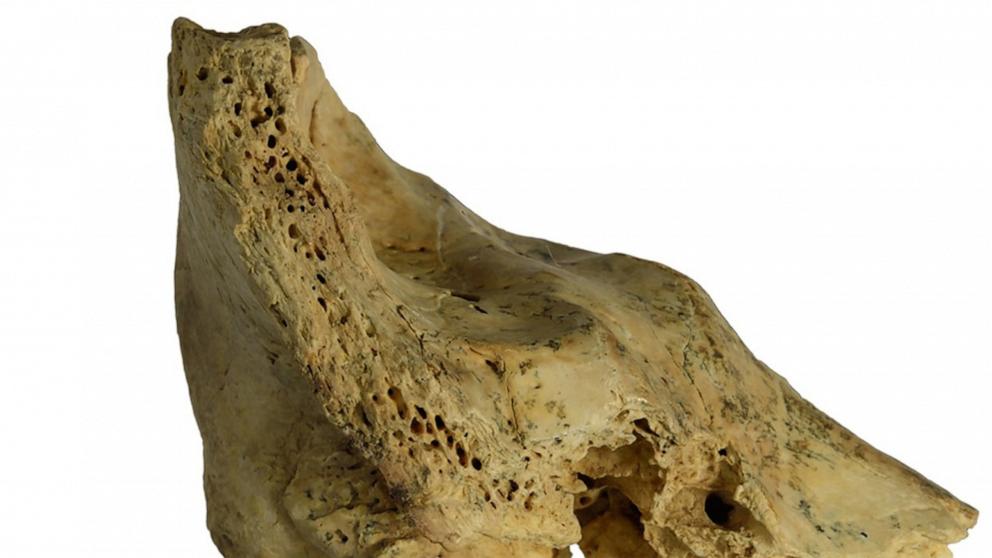The child’s survival to age 6 may be due to altruism within the community.
Fossils from the skull of a Neanderthal child that likely had Down syndrome shed light into the collaborative and communal caregiving that likely helped the child survive to the age of 6, according to new research.
The fossil fragments, excavated from the Cova Negra archaeological site in Valencia, Spain, were determined to be from a Neanderthal child’s ear. The child likely lived 273,000 years ago and showed congenital malformations consistent with Down syndrome, according to a study, which was published Wednesday in Science Advances.
When researchers did a CT scan of the small fragment of the temporal lobe, the bone where the inner ear is located, they reconstructed the inner ear that showed five abnormalities associated with Down syndrome, which had never been detected before in a Neanderthal, Mercedes Conde-Valverde, a paleoanthropologist at the University of Alcala in Spain, told ABC News.
“The only syndrome that is compatible with the entire set of malformations present in [the remains] is Down syndrome,” Conde-Valverde wrote.
What makes the fossil even more remarkable is that the female child would have needed a lot of assistance to deal with her health difficulties, Conde-Valverde said.
Neanderthals would take care of people who were capable of returning the favor or helping them in another way. But this Neanderthal girl — who suffered from health issues such as hearing loss, imbalance problems and vertigo — likely could not return the favor, so her survival appears to be based purely on the altruism of the adults around her, Conde-Valverde said.
This negates the theory that caregiving emerged merely as a self-interested pact between participants who could reciprocate the behavior and that Neanderthals were capable of displaying altruism, the researchers said.
The child’s mother would have struggled to provide care while simultaneously keeping up with the daily challenges of a foraging lifestyle in the Paleolithic era, according to the paper.
Prehistoric children with congenital diseases had an uncertain path to survival to adulthood and could not be counted on for reciprocation, according to the paper.
The findings suggest that hominin caregiving emerged due to compassion rather than reciprocation, the researchers concluded.
Neanderthals, or Homo neanderthalensis, lived during the Paleolithic period lived between 430,000 and 40,000 years ago. They were “clever people” with big brains and buried their dead, Conde-Valverde said. The biggest difference to homo sapiens are the morphology of the skull.
“I think they are really humankind,” she said. “…with more research and more fossils, we will know that they were really similar to us.”

Dr. Debi Johnson is a medical expert and health journalist dedicated to promoting well-being. With a background in medicine, she offers evidence-based insights into health trends and wellness practices. Beyond her reporting, Dr. Debi enjoys hiking, yoga, and empowering others to lead healthier lives.








:max_bytes(150000):strip_icc()/eddie-murphy-david-spade-062924-aba74221788344f68e85346f2e472afe.jpg)